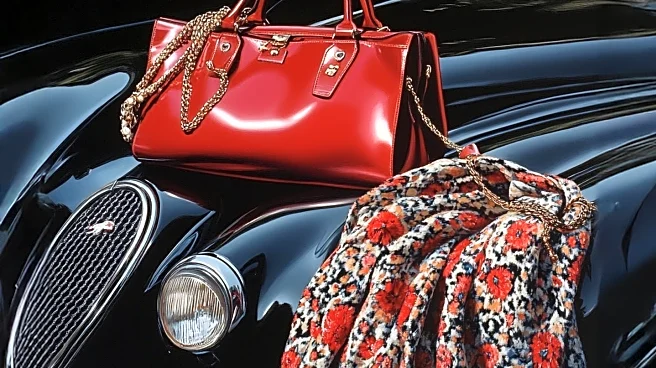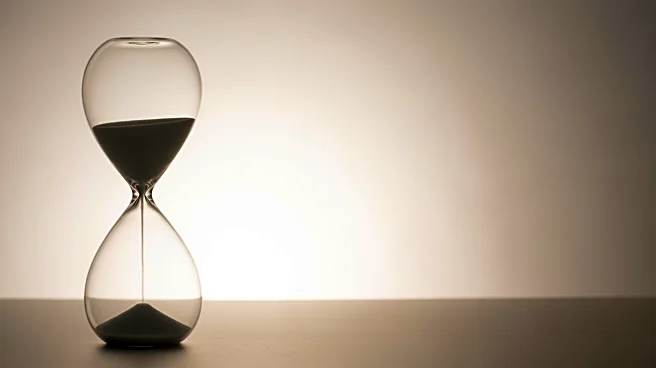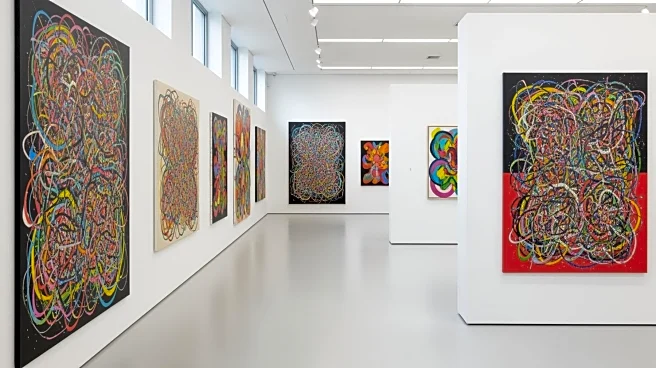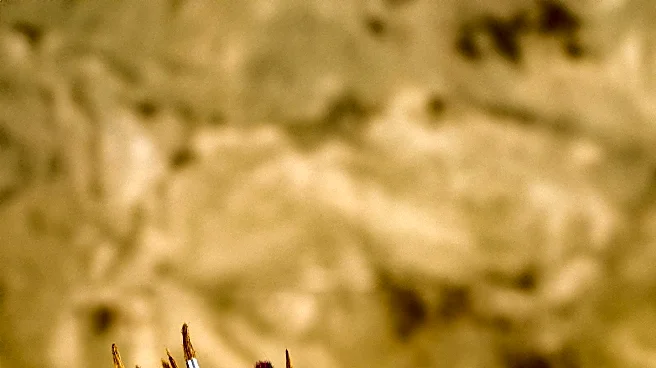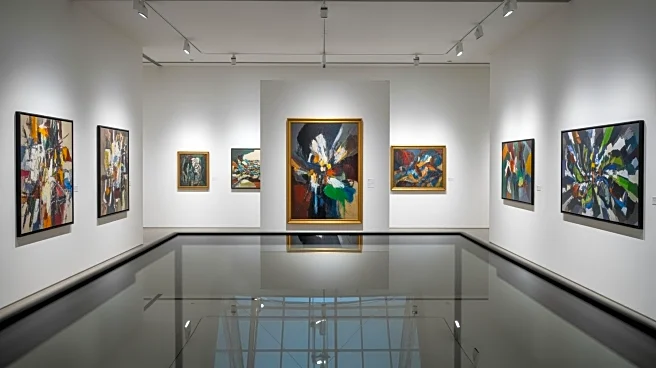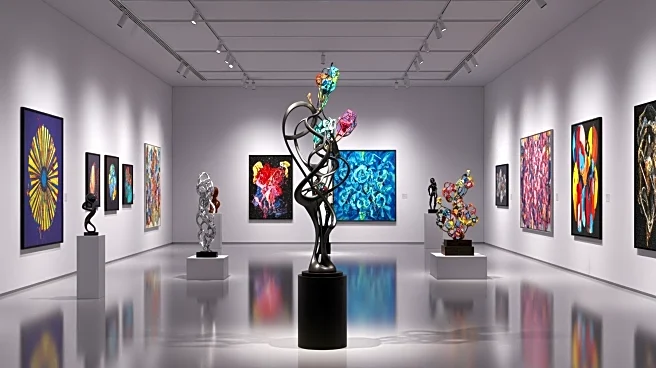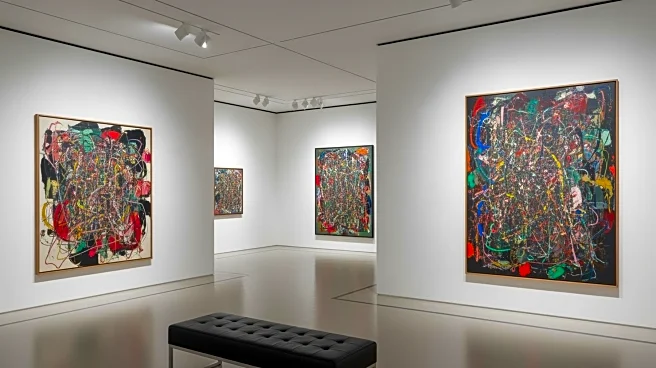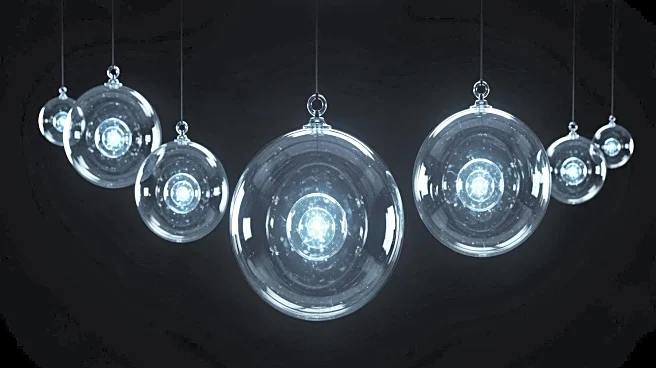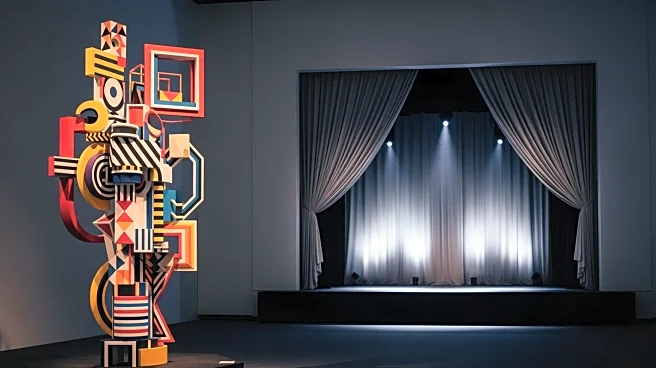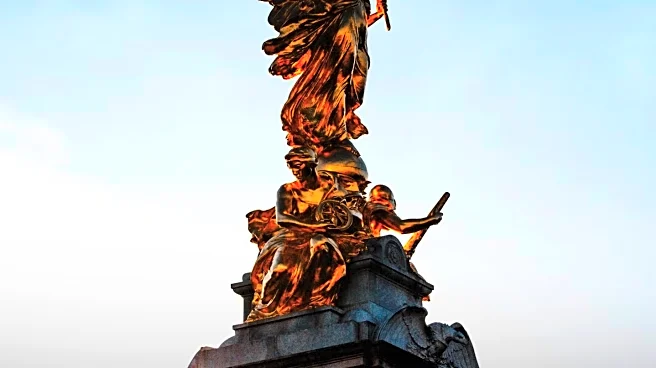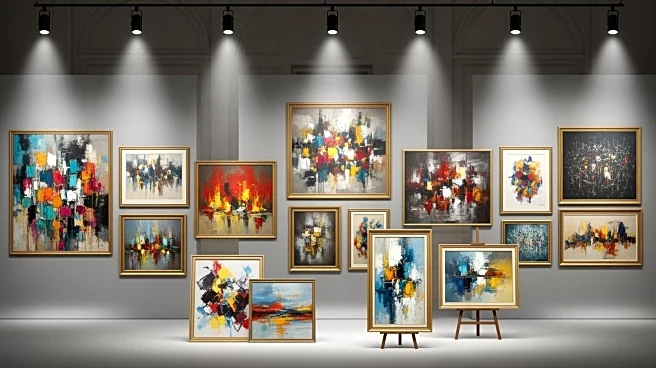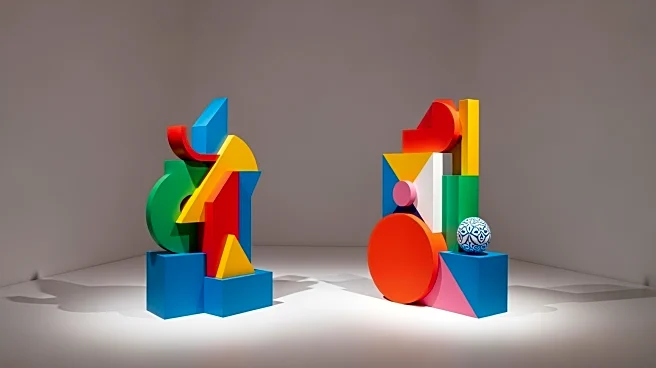What's Happening?
Artist Tavares Strachan has unveiled his new solo exhibition, The Day Tomorrow Began, at the Los Angeles County Museum of Art (Lacma). The exhibition features 20 new works that explore themes of world-making and invisible histories, using a variety of materials
including neon, ceramics, bronze, painting, text, and performance elements. Strachan's work challenges traditional narratives and highlights stories that have been overlooked or marginalized. The exhibition is co-organized with the Columbus Museum of Art in Ohio, where a new permanent installation by Strachan will be unveiled. The exhibition aims to create an immersive experience that encourages viewers to reflect on the past and envision a more equitable future.
Why It's Important?
Strachan's exhibition at Lacma represents a significant contribution to contemporary art, challenging traditional narratives and highlighting marginalized stories. By using diverse materials and immersive installations, Strachan encourages viewers to engage with complex themes and reflect on the past. The exhibition's focus on world-making and invisible histories offers a unique perspective on art's role in shaping cultural narratives and promoting social change. Strachan's work may inspire other artists to explore similar themes, contributing to a broader movement within the art world that prioritizes inclusivity and diversity.
What's Next?
Following the exhibition at Lacma, Strachan's work will continue to be showcased at the Columbus Museum of Art, where a new permanent installation will be unveiled. The exhibition's success may lead to further opportunities for Strachan to collaborate with other institutions and artists, expanding the reach of his work. Additionally, the themes explored in The Day Tomorrow Began may influence future exhibitions and projects, encouraging other artists to engage with similar topics and contribute to a broader dialogue within the art world.
Beyond the Headlines
Strachan's work challenges traditional narratives and highlights the importance of storytelling in shaping cultural memory. By focusing on invisible histories, the exhibition encourages viewers to reflect on the stories that have been overlooked or marginalized, promoting a more inclusive and equitable understanding of the past. The exhibition's immersive installations offer a unique experience that encourages viewers to engage with complex themes and envision a more hopeful future.
